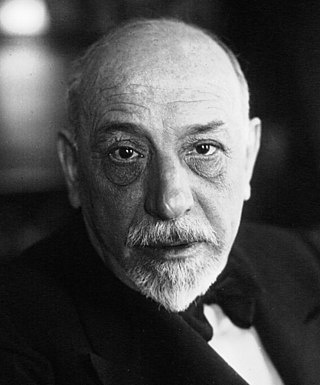
Luigi Pirandello was an Italian dramatist, novelist, poet, and short story writer whose greatest contributions were his plays. He was awarded the 1934 Nobel Prize in Literature "for his bold and ingenious revival of dramatic and scenic art" Pirandello's works include novels, hundreds of short stories, and about 40 plays, some of which are written in Sicilian. Pirandello's tragic farces are often seen as forerunners of the Theatre of the Absurd.

Laura Betti was an Italian actress known particularly for her work with directors Federico Fellini, Pier Paolo Pasolini and Bernardo Bertolucci. She had a long friendship with Pasolini and made a documentary about him in 2001.

Francesco "Ciccio" Ingrassia was an Italian actor, comedian and film director.

Paolo Taviani and Vittorio Taviani, collectively referred to as the Taviani brothers, were Italian film directors and screenwriters who collaborated on numerous film productions.
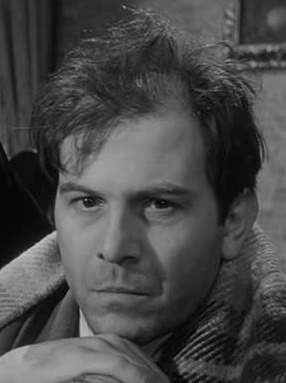
Enrico Maria Salerno was an Italian actor, voice actor and film director. He was also the voice of Clint Eastwood in the Italian version of Sergio Leone's Dollars Trilogy films, and the voice of Christ in The Gospel According to St. Matthew directed by Pier Paolo Pasolini.

Everybody's Woman is a 1934 Italian drama film directed by Max Ophüls and starring Isa Miranda, Memo Benassi and Tatyana Pavlova. It is the only film Max Ophüls made in Italy. The film was a success and Isa Miranda became a star. It was shot at the Cines Studios in Rome and on location in Canzo.

Laura Solari was an Italian film actress.

Riccardo Garrone was an Italian actor and dubber.
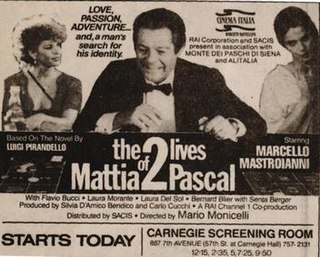
The Two Lives of Mattia Pascal is a 1985 Italian drama film directed by Mario Monicelli. It was adapted from the novel Il fu Mattia Pascal by Luigi Pirandello. It was entered into the 1985 Cannes Film Festival.

L'uomo, la bestia e la virtù, internationally released as Man, Beast and Virtue, is a 1953 Italian comedy film directed by Steno. It starred Italian comedian Totò and famed actor Orson Welles. The film was originally shot in Gevacolor, but only black-and-white prints exist today.
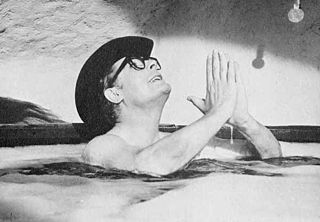
The list of the 100 Italian films to be saved was created with the aim to report "100 films that have changed the collective memory of the country between 1942 and 1978". Film preservation, or film restoration, describes a series of ongoing efforts among film historians, archivists, museums, cinematheques, and non-profit organizations to rescue decaying film stock and preserve the images they contain. In the widest sense, preservation assures that a movie will continue to exist in as close to its original form as possible.

Mario Ferrari was an Italian film actor. After making his debut in 1920, Ferrari became a mainstay of Italian cinema during the Fascist era appearing in a mixture of leading and supporting roles. He played the villainous Graiano d'Asti in the historical film Ettore Fieramosca (1938). Ferrari continued to work regularly in the post-Second World War years.

Cardinal Messias is a 1939 Italian historical drama film directed by Goffredo Alessandrini and starring Camillo Pilotto, Enrico Glori and Mario Ferrari. The film was awarded the Mussolini Cup at the 1939 Venice film festival. It portrays the life of Guglielmo Massaia, a nineteenth-century Italian known for his missionary work in the Ethiopian Empire.

The Barber of Seville is a 1947 Italian opera film directed by Mario Costa and starring Ferruccio Tagliavini, Tito Gobbi and Nelly Corradi. It is an adaptation of Gioachino Rossini's 1816 opera The Barber of Seville.

Gino Buzzanca was an Italian film actor.

Mariano Rigillo is an Italian actor.
The Knight of San Marco is a 1939 Italian historical drama film directed by Gennaro Righelli and starring Mario Ferrari, Dria Paola and Laura Nucci. It is set during the Risorgimento. It was made at Cinecittà, with sets designed by the art director Alfredo Montori.
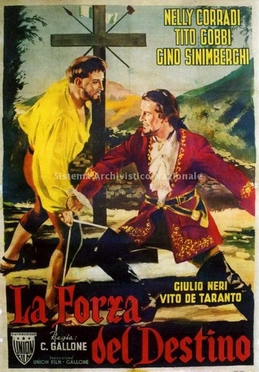
The Force of Destiny is a 1950 Italian musical melodrama film directed by Carmine Gallone and starring Nelly Corradi, Tito Gobbi and Gino Sinimberghi. It is based on Giuseppe Verdi's opera La forza del destino.

King of Diamonds or The Money King is a 1936 Italian "white-telephones" comedy film directed by Enrico Guazzoni and starring Angelo Musco, Rosina Anselmi, and Mario Pisu.

The Sinner is a 1940 Italian drama film directed by Amleto Palermi and starring Paola Barbara, Vittorio De Sica, and Fosco Giachetti.



















